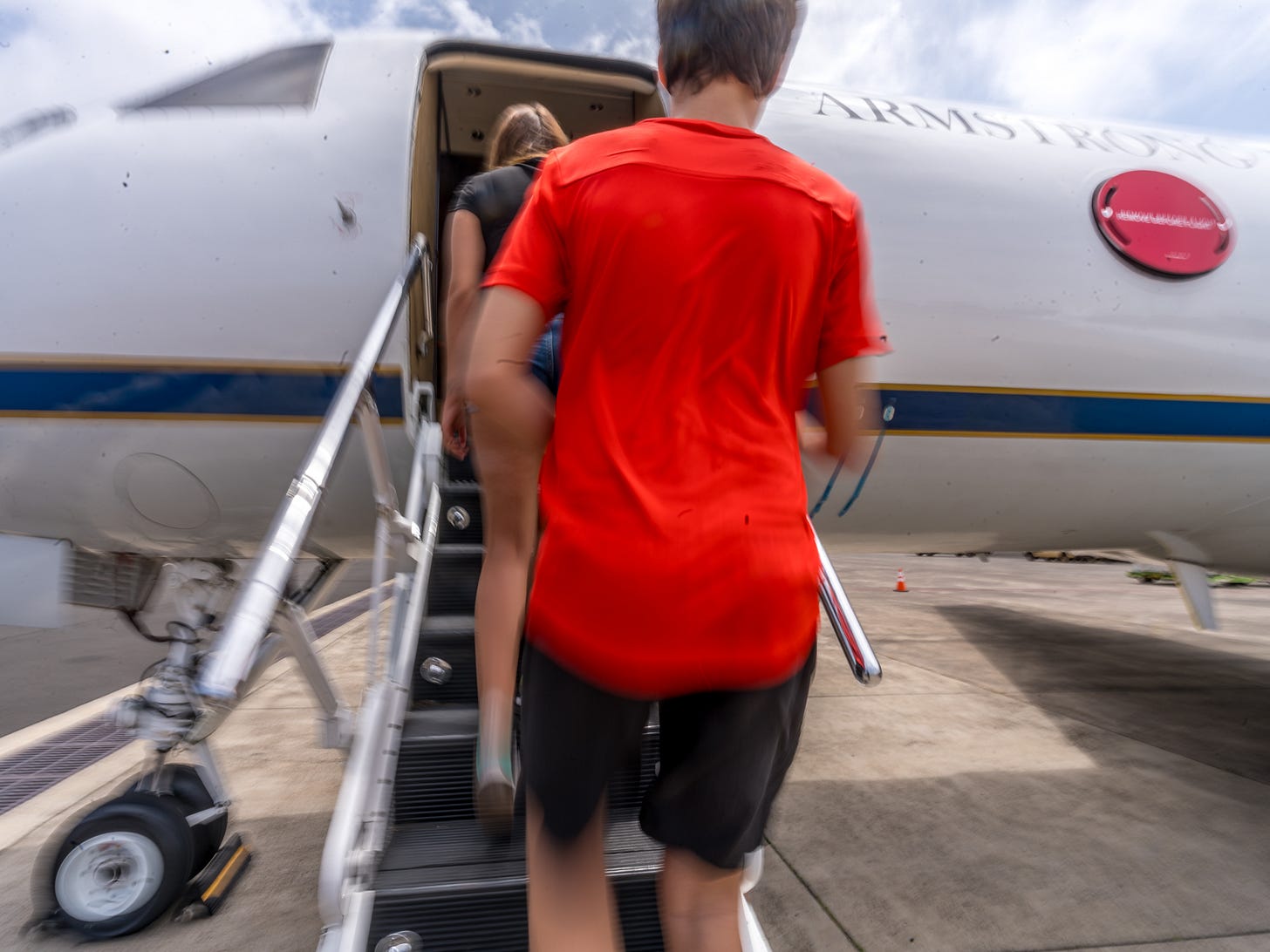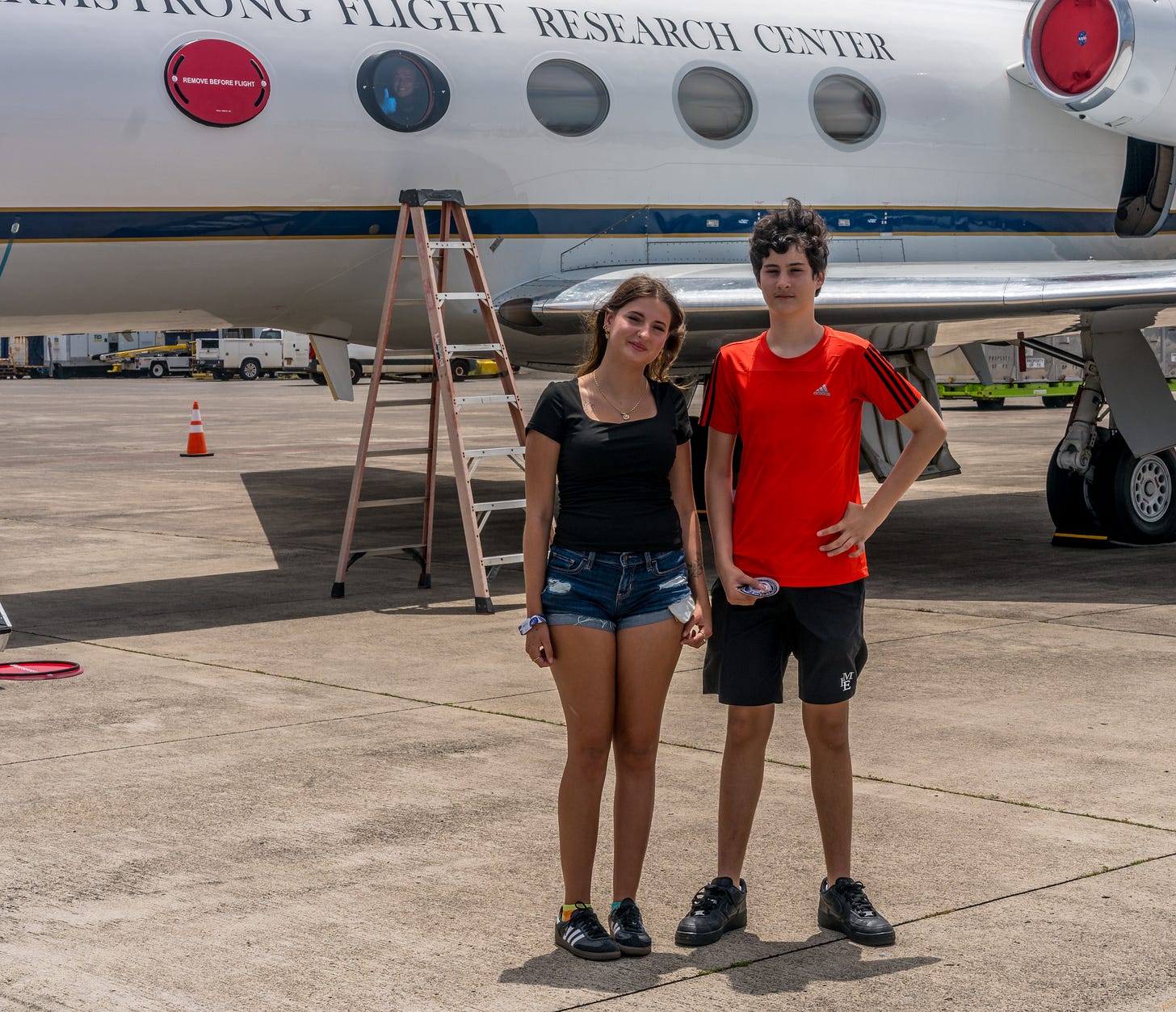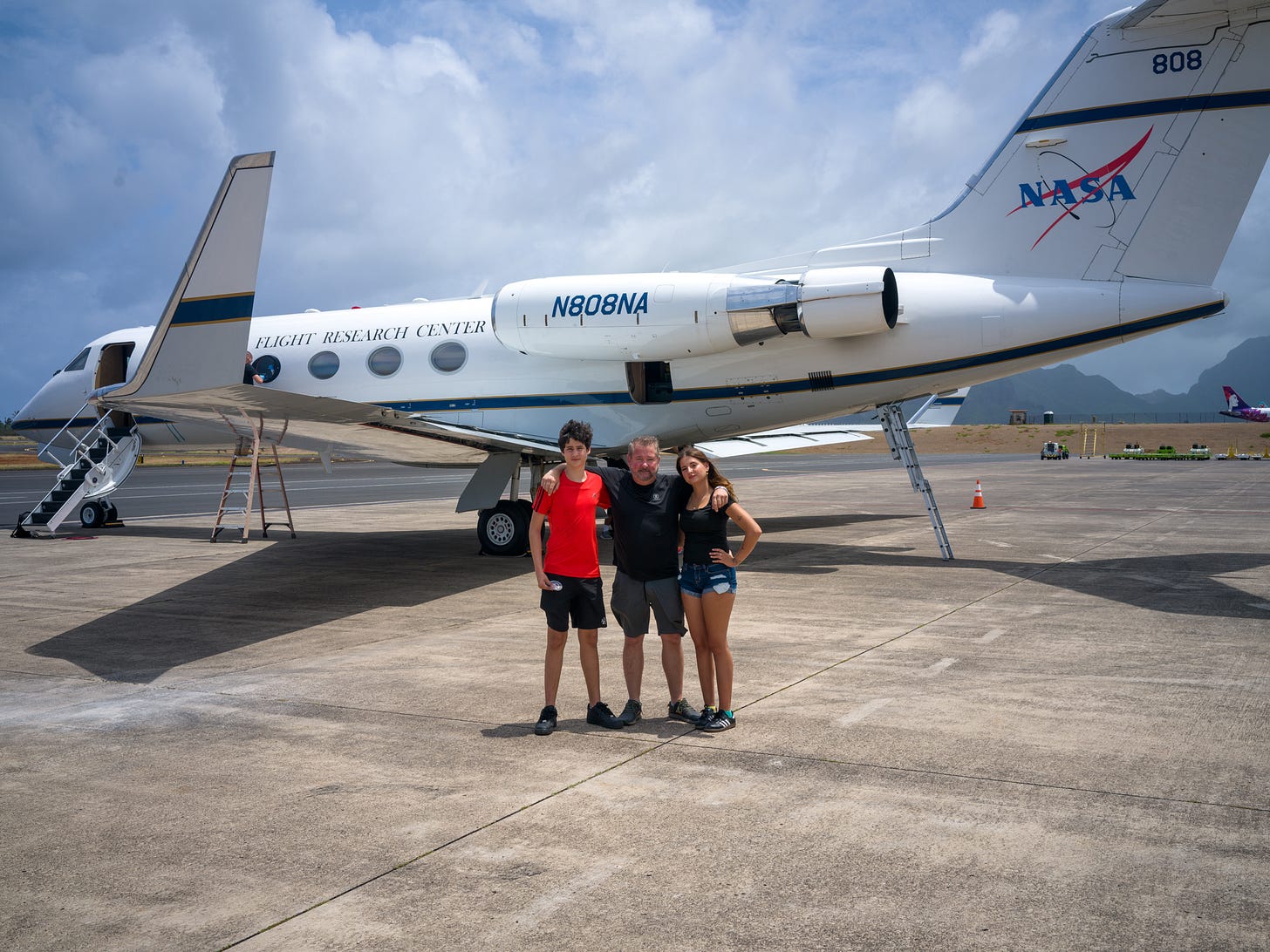After three intensive training flights, we found ourselves with expected and unexpected downtime in Hawai’i. Launch windows had been scrubbed, weather patterns shifted, and suddenly the precise choreography of our mission hit pause. That's when my two kids—13 and 19—joined me on what was more than just a family visit to Kaui’i.
The Embrace That Defines NASA
What happened next revealed something great about NASA's culture. The SciFli crew didn't just tolerate two teenagers hanging around their high-stakes operation. They embraced them with an enthusiasm that was truly inspiring.
NASA patches appeared from pockets. Stickers materialized from equipment cases. Suddenly my kids weren't just visitors—they were part of the extended NASA family. And I saw this happen many times with other kids and families at the hotel.
I've worked in technology long enough to know that not every organization handles "bring your kids to work" moments gracefully. Some tolerate it. Some endure it. NASA SciFli celebrated it.
The Gulfstream Tour That Became a Masterclass
The crew invited my kids aboard the Gulfstream III—not for a quick peek, but for a real tour. They sat in the cockpit, explored the cabin where servers and imaging equipment would capture the mission. Every question was met with patient, enthusiastic answers.
The flight mission director personally walked them through the aircraft, explaining not just what everything did, but why it mattered. This wasn't a rehearsed spiel—it was genuine passion and desire to share.
Later, as my kids posed for a photo with the aircraft, that same mission director couldn't resist jumping into frame with a huge grin. That spontaneous photobomb perfectly captured the spirit of NASA SciFli—serious about the mission, joyful about sharing it.
Mission Day: When NASA Goes Above and Beyond
On mission day, as we prepared for the flight, the SciFli team did something extraordinary. They arranged for my kids to be at the perfect vantage point to watch their dad take off on a real NASA mission. They were ferried to the ideal spot, helped to set up their cameras, and given the chance to document this moment from their perspective.
On one of the most critical days of the mission, with countless technical details to manage, the team made time to ensure two teenagers could watch their father be part of something special. That's not in any mission manual—that's human excellence.
The Flight Suit Effect: NASA as a Conversation Starter
After the mission, still wearing my flight suit, I walked across the street from the Fixed Base Operation (FBO) to hop in my car and drive back to the hotel. That's when a vehicle came driving up, actually blocking me in my parking spot. For a moment, I wondered what was happening.
Then the window rolled down. A mother, father, and their 10-year-old child were looking at me with barely contained excitement.
"Are you with NASA?" the father asked. "What are you doing here?" the mother added. "Is that a real NASA flight suit?" the kid wanted to know.
This family didn't know about our mission. They didn't know about The Exploration Company or the ECCO-2 objectives. But they saw NASA, and that was enough to make them stop their day and engage.
The Hotel Conversations: When Curiosity is Peaked
The flight suit effect didn't stop at the parking lot. Walking back to my hotel room became a series of mini-presentations:
A couple in the elevator: "What's NASA doing in Hawai’i?"
A family at the pool: "Can you really see spacecraft from airplanes?"
Hotel staff: "How do I get my kid interested in space?"
Each interaction reinforced the same truth: NASA's brand transcends technology. It represents human achievement, exploration, and possibility. It is a strong part of our national identity, as the NASA meatball is instantly recognizable from when I was a kid.
I never experienced this level of interest with any other swag I have worn.
The Multiplier Effect: Beyond the Technical Mission
Consider the impact multiplication:
Direct Mission Impact: We captured data from one spacecraft, advancing reentry technology
Inspired Youth Impact: Two teenagers experienced NASA's openness and excellence firsthand
Community Impact: One family in a parking lot went home talking about space
Casual Contact Impact: Dozens of hotel conversations planted seeds of interest
The technical mission had a defined scope and timeline. The human mission ripples outward indefinitely. What struck me most was that none of this felt forced or scripted. The SciFli team's enthusiasm for sharing their work was as genuine as their precision in executing it. They understand something profound: inspiring the next generation isn't a side quest—it's part of the main mission.
The Mission That Never Ends
My part in the ECCO-2 mission officially ended when we landed back in Hawaii with our data secured. But the inspiration mission—the one where NASA opens doors and minds—that one continues.
Somewhere in Hawai’i, a 10-year-old is still talking about meeting someone from NASA in a parking lot. My teenagers are still talking about it with their friends.
When NASA embraced my children during our mission downtime, they weren't just being kind—they were being strategic. They understand that today's wide-eyed kid in the cockpit might be tomorrow's mission specialist. Today's parking lot conversation might inspire tomorrow's breakthrough.
That's the genius of NASA. They don't just push the boundaries of technology and exploration. They pull the rest of us along with them, one conversation, one tour, one photobombed picture at a time.
Because in the end, the most important missions aren't just about reaching space—they're about bringing space down to Earth, making it tangible, accessible, and irresistible to the next generation.





Great story. Great opportunity for all. NASA has always stood for these values - and weathered political storms. Let’s hope that our desire to advance learning will always triumph.